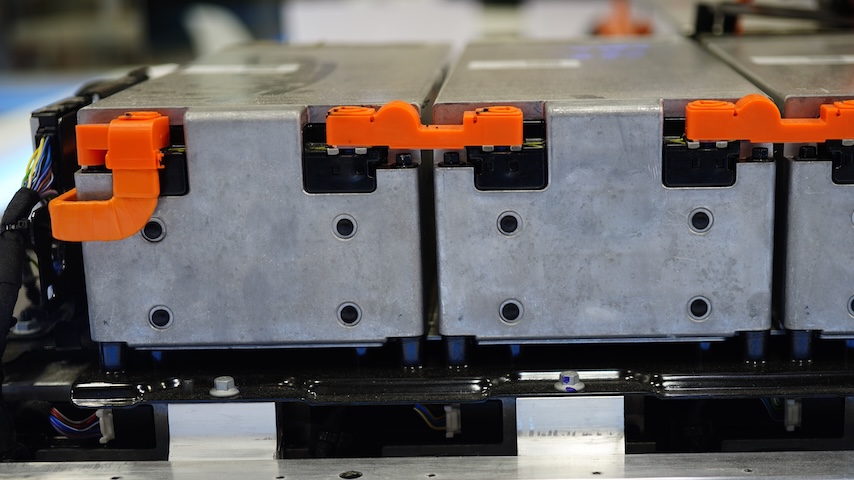Fashion’s Modular Future
Fashion’s Modular Future


Refashion brings computational design to apparel by breaking garments into reusable parts that can be rearranged into new shapes.
Fast fashion’s waste crisis is well documented: millions of tons of textiles enter landfills every year, while consumers cycle through clothing faster than ever.
A research team at the Massachusetts Institute of Technology (MIT) and Adobe is proposing a different future—one where garments are assembled, disassembled, and rebuilt like engineered systems rather than disposable products. Their new software toolkit, Refashion, helps designers create clothing from modular fabric units that can be recombined into new silhouettes, extending a garment’s life long after its initial design intention.
“Most clothes you buy today are static and are discarded when you no longer want them,” noted lead researcher Rebecca Lin.
Rather than cutting and sewing large continuous panels, Refashion breaks complex forms into standardized modules that attach through reversible connectors, enabling a user to reconfigure a top into a dress, change a sleeve shape, or switch out whole panels without getting rid of the original garment.
Refashion’s design workflow begins inside the tool’s Pattern Editor, where creators sketch garment shapes that will ultimately be decomposed into modular pieces.
“Designers sketch their garment patterns in the tool’s ‘Pattern Editor,’ which guarantees that any pattern drawn there can be constructed from the system’s modular building blocks,” Lin said.
Although the designer views fluid shapes, the software is constantly evaluating whether those shapes can be produced from the available module library. Once a pattern is complete, Refashion automatically generates an assembly plan that minimizes the number of modules used, resulting in an optimization aimed at reducing redundancy and fabrication effort.
Relevant Reads: The Generative AI Design Pipeline: A New Era of Creativity
The tool also provides a 3D simulation to preview how the modular garment will drape on a chosen body model.
“We focused on core fabric manipulation techniques—gathers, pleats, and darts,” Lin explained. “By supporting these through carefully designed interfaces and a small set of module types, we can achieve a wide range of silhouettes while keeping the module library compact.”
The balance, fit versus complexity, is central to the system’s engineering. More specialized modules would allow highly refined shapes, but they would also balloon fabrication costs and limit cross-garment reuse. The library works because it is intentionally small.
Equally critical is the connector system. Unlike traditional sewing, Refashion utilizes discrete attachment points, implemented in prototypes using snaps and fasteners.
“Our connector system is intentionally bidirectional, meaning any two module edges can attach symmetrically,” Lin said. “This simplifies both the computational decomposition and the physical assembly.”
This symmetry allows the algorithms to treat edges interchangeably, reducing complexity, and it enables shaping techniques where one module edge can “gather” onto another by aligning multiple connection points. Such connectivity is the backbone of expressive shaping using even simple square modules.
The system itself is entirely rule-based and not machine-learning-driven, which preserves determinism and speed when it comes to generating assemblies. For typical modular garment designs, the algorithm performs very efficiently, so the system can reliably generate assemblies without notable runtime issues, Lin explained.
Discover the Benefits of ASME Membership
Materials are also deliberately flexible. Refashion doesn’t dictate fabric choice as it provides a design structure that users can adapt to denim, muslin, cotton, hand-crocheted pieces, or even experimental blends. Mixing textiles with drastically different stretch or stiffness may create challenges but also opportunities for novel hybrid designs, Lin added.
While pitched as a sustainability tool for fashion, Refashion engages a much broader engineering question: How can modularity enable systems to evolve over time?
During testing, the system proved its accessibility. Participants along with novices were quick to assemble functional prototypes. In user studies, some created a draped top, then expanded it into a jumpsuit within a 30-minute session. That ease of iteration is critical for reducing waste. If updating a garment becomes as natural as updating software, the throwaway cycle weakens.
The research team plans to expand module types, support curved components, deepen integration of color and pattern variation, and eventually allow users to remix existing store-bought garments. This final step would move modular reuse from a conceptual future into immediate consumer practice.
“Modular design is a useful perspective across many domains,” Lin said. “The underlying idea of breaking complex forms into reusable, recombinable units could certainly inspire applications in other areas.”
Aida M. Toro is a lifestyle writer from New York City.
A research team at the Massachusetts Institute of Technology (MIT) and Adobe is proposing a different future—one where garments are assembled, disassembled, and rebuilt like engineered systems rather than disposable products. Their new software toolkit, Refashion, helps designers create clothing from modular fabric units that can be recombined into new silhouettes, extending a garment’s life long after its initial design intention.
“Most clothes you buy today are static and are discarded when you no longer want them,” noted lead researcher Rebecca Lin.
Rather than cutting and sewing large continuous panels, Refashion breaks complex forms into standardized modules that attach through reversible connectors, enabling a user to reconfigure a top into a dress, change a sleeve shape, or switch out whole panels without getting rid of the original garment.
Computational design for a circular wardrobe
Refashion’s design workflow begins inside the tool’s Pattern Editor, where creators sketch garment shapes that will ultimately be decomposed into modular pieces.
“Designers sketch their garment patterns in the tool’s ‘Pattern Editor,’ which guarantees that any pattern drawn there can be constructed from the system’s modular building blocks,” Lin said.
Although the designer views fluid shapes, the software is constantly evaluating whether those shapes can be produced from the available module library. Once a pattern is complete, Refashion automatically generates an assembly plan that minimizes the number of modules used, resulting in an optimization aimed at reducing redundancy and fabrication effort.
Relevant Reads: The Generative AI Design Pipeline: A New Era of Creativity
The tool also provides a 3D simulation to preview how the modular garment will drape on a chosen body model.
“We focused on core fabric manipulation techniques—gathers, pleats, and darts,” Lin explained. “By supporting these through carefully designed interfaces and a small set of module types, we can achieve a wide range of silhouettes while keeping the module library compact.”
The balance, fit versus complexity, is central to the system’s engineering. More specialized modules would allow highly refined shapes, but they would also balloon fabrication costs and limit cross-garment reuse. The library works because it is intentionally small.
Equally critical is the connector system. Unlike traditional sewing, Refashion utilizes discrete attachment points, implemented in prototypes using snaps and fasteners.
“Our connector system is intentionally bidirectional, meaning any two module edges can attach symmetrically,” Lin said. “This simplifies both the computational decomposition and the physical assembly.”
This symmetry allows the algorithms to treat edges interchangeably, reducing complexity, and it enables shaping techniques where one module edge can “gather” onto another by aligning multiple connection points. Such connectivity is the backbone of expressive shaping using even simple square modules.
The system itself is entirely rule-based and not machine-learning-driven, which preserves determinism and speed when it comes to generating assemblies. For typical modular garment designs, the algorithm performs very efficiently, so the system can reliably generate assemblies without notable runtime issues, Lin explained.
Discover the Benefits of ASME Membership
Materials are also deliberately flexible. Refashion doesn’t dictate fabric choice as it provides a design structure that users can adapt to denim, muslin, cotton, hand-crocheted pieces, or even experimental blends. Mixing textiles with drastically different stretch or stiffness may create challenges but also opportunities for novel hybrid designs, Lin added.
Engineering a circular design future
While pitched as a sustainability tool for fashion, Refashion engages a much broader engineering question: How can modularity enable systems to evolve over time?
During testing, the system proved its accessibility. Participants along with novices were quick to assemble functional prototypes. In user studies, some created a draped top, then expanded it into a jumpsuit within a 30-minute session. That ease of iteration is critical for reducing waste. If updating a garment becomes as natural as updating software, the throwaway cycle weakens.
The research team plans to expand module types, support curved components, deepen integration of color and pattern variation, and eventually allow users to remix existing store-bought garments. This final step would move modular reuse from a conceptual future into immediate consumer practice.
“Modular design is a useful perspective across many domains,” Lin said. “The underlying idea of breaking complex forms into reusable, recombinable units could certainly inspire applications in other areas.”
Aida M. Toro is a lifestyle writer from New York City.






